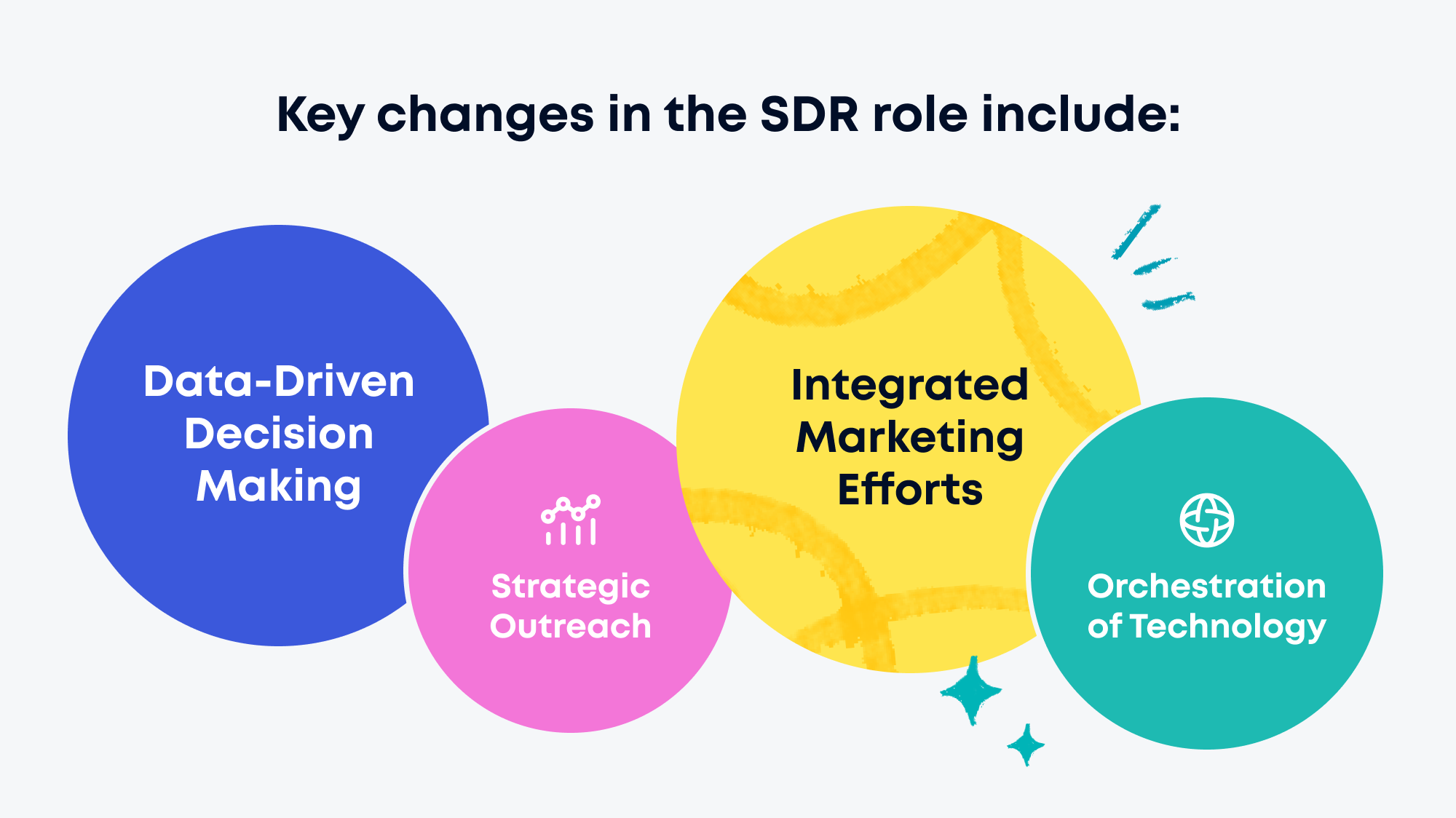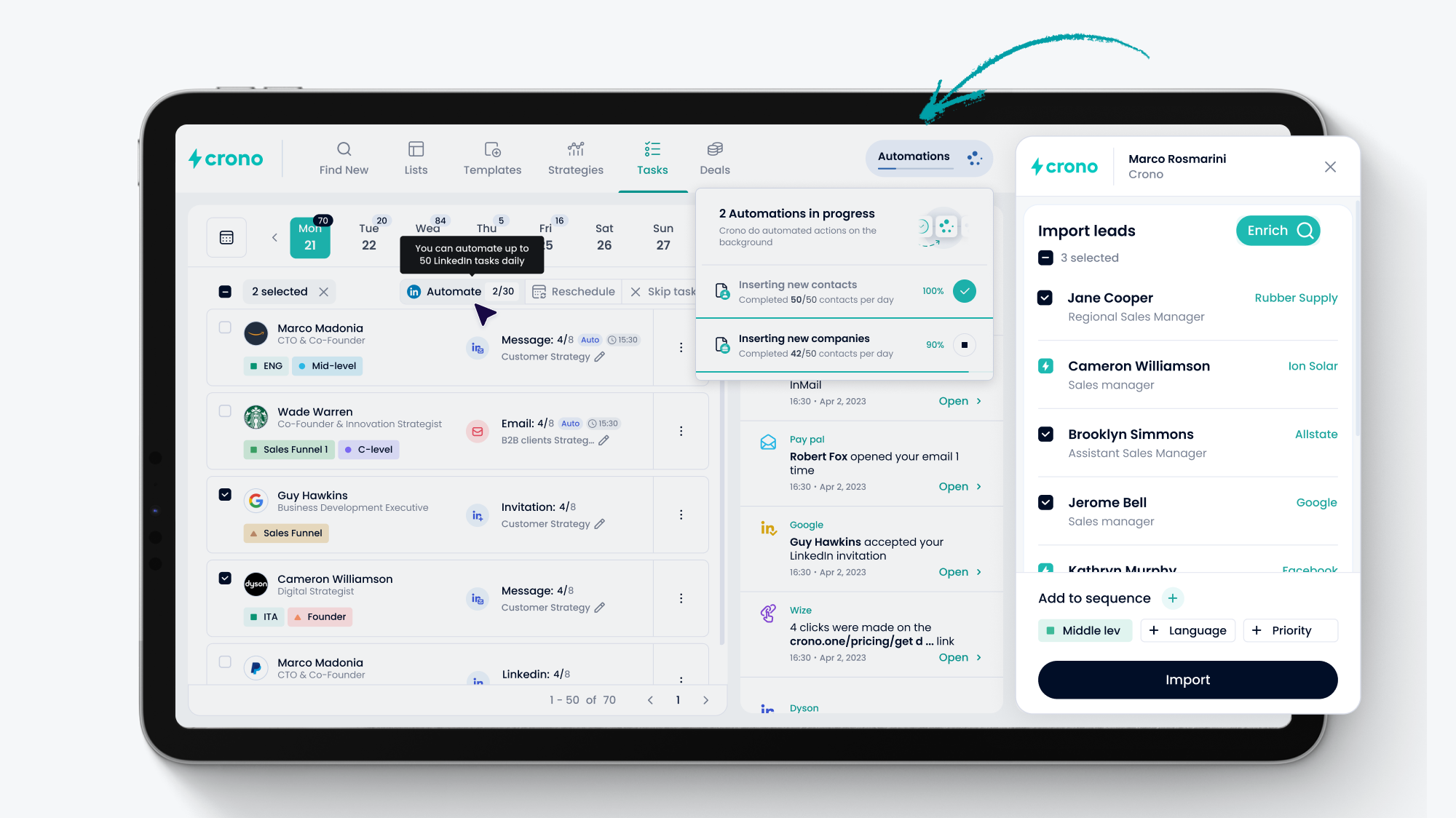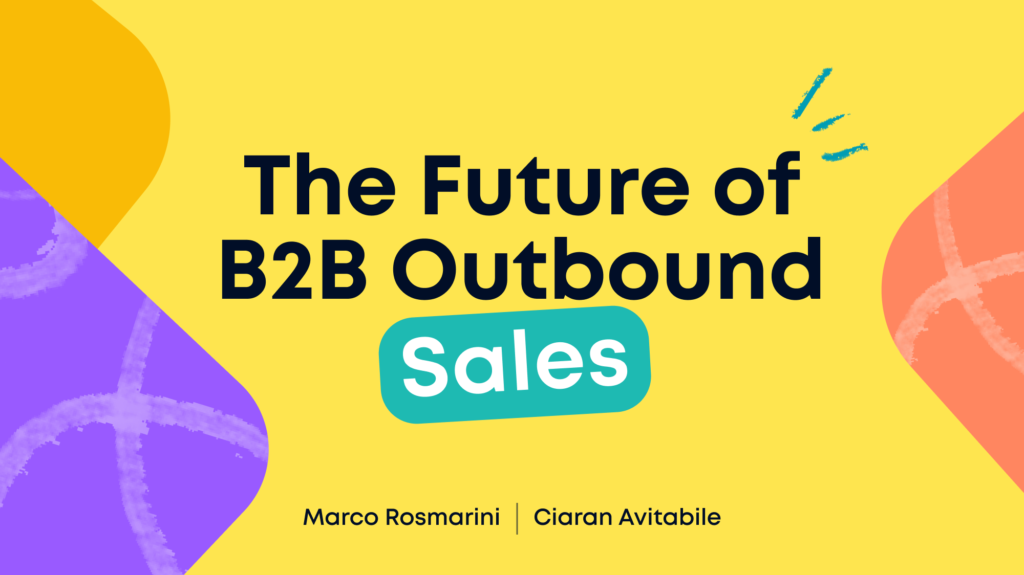What the future of B2B Outbound Sales will look like?
Outbound sales remain a hot topic in the business world. Despite rumours of its decline, outbound sales is thriving, continuously evolving into something new and powerful for those who embrace it.
The B2B sales landscape is changing rapidly, driven by a data-centric approach that leverages AI for personalization at scale, workflows, and task automation.
This transformation is redefining the role of the Sales Development Representative (SDR), necessitating new skills and systems to effectively build pipelines and reach new customers. Gone are the days of purely operational tasks. SDRs now play a strategic role, integrating closely with marketing teams to leverage AI-driven insights and signals for more effective customer outreach.
We had the pleasure of speaking with Ciaran Avitabile, Co-Founder and Partner at Aneto Partners, about the current and future landscape of outbound sales. In this article, we’ll combine Crono’s industry expertise with insights from Ciaran and Aneto Partners to explore the evolution of B2B sales.
The Evolution of Outbound Sales
For those who’ve been in the industry for a while, outbound sales used to be straightforward.
The essentials included a CRM (Salesforce being the go-to choice), a LinkedIn Sales Navigator license, and a Sales Engagement Platform.
Moreover, most tasks were manual, analytics were less precise, and the primary channels were phone, email, and in-person meetings. Outbound sales were costly, requiring companies to hire more sales reps to scale their efforts.
Still, in recent years, numerous outbound tools have emerged, democratising access to outbound sales. Affordable CRMs, with HubSpot leading the way, databases like Apollo.io, enrichment and engagement tools with extensive automation capabilities enabled companies to reach thousands of leads efficiently.
Today, automation and extensive outreach tools are widely used by many startups and scale-ups needing a rapid sales boost to drive growth.
However, this has led to growing issues related to domain health, email warm-ups, LinkedIn blockages, and conversion drops. Consequently, outbound sales is shifting, making it more important than ever to invest in the right technologies. These technologies reduce costs, enhance ROI, and simplify the SDR’s role.

AI is emerging not just as a facilitator to reach more leads but as an enhancer capable of collecting information, analyzing data, and supporting SDRs to be faster and better at their job. Sellers are evolving from being mere salespeople to becoming guides, skillfully navigating prospects through the buying cycle with precision and empathy.
In fact, modern buyers often complete 95% of the buying journey before engaging with a seller (Gartner). This means sellers must focus on engaging at the right time, guided by signals indicating readiness to buy.
Timing is critical: engage too early, and the buyer isn’t ready; engage too late, and they might have already chosen a competitor. Personalization goes beyond addressing someone by their name. It involves understanding their journey, the content they’ve interacted with, and their sentiment toward it.
The New Role of Sales Development Representatives
Today’s Sales Development Representatives (SDRs) have moved beyond traditional cold calling and mass email campaigns. They are now data-driven professionals, using AI to identify buying signals and execute personalized interactions with potential customers. This evolution has transformed SDRs into strategic partners within the marketing team, emphasizing prospect education over mere lead generation.
-
- Data-Driven Decision Making: Utilizing AI and analytics to gauge where prospects are in their buying journey.
-
- Integrated Marketing Efforts: Collaborating with the broader marketing team to develop cohesive, personalized outreach strategies across multiple channels
-
- Strategic Outreach: Shifting from high-volume cold outreach to targeted, meaningful engagements with leads that have high conversion potential.
- Orchestration of Technology: Automating low-value tasks to focus on high-impact activities, enhancing efficiency and effectiveness.

Hence, to build effective sales pipelines, SDRs must function as a hybrid of traditional SDRs, sales operations (SOPS), and digital marketing experts. Investing in sophisticated AI-powered signal infrastructure can significantly shorten sales cycles and improve close rates by ensuring outreach is both timely and relevant.
The evolution of sales tools will accompany this shift, with a new generation of sales reps moving away from outdated methods.
Technology will provide online signals for opportunities, and SDRs will be tasked with converting these opportunities into clients. By managing insights and data, outreach can be optimally timed and utilize all platform features effectively. The role of the SDR will increasingly resemble that of an orchestrator, balancing tools, technologies, and knowledge to maximize the impact of every task.
The Future of Sales Tools
AI-powered sales platforms like Crono enhance the ability to deliver the right message to the right person at the right time.
By investing in these technologies, companies can ensure a more efficient and effective sales process, reducing costs and increasing ROI. With Crono, sales teams can build effective pipelines and close deals faster by focusing their efforts on the right tasks and leveraging data-driven strategies.
In this new era, the SDR’s role is more crucial and impactful than ever, thanks to AI and automation. Sellers must now focus on providing the right input to create an optimal buyer’s journey, ensuring that interested prospects receive the tailored experience they expect. As we embrace these changes, it’s clear that the future of B2B SaaS outreach and sales development is bright, strategic, and data-driven.

How can sales continue leveraging technology smartly and sustainably?
AI, automation, and analytics are here to stay.
At Crono, we believe the future is at our fingertips. New platforms that leverage multiple tools through a single interface will lead the way.
Accordingly, the future sales stack will not consist of numerous separate tools. Instead, platforms will aggregate many features into one powerful interface, enhancing collaboration across departments and leveraging data effectively. Platforms will enable sales teams to perform quality outreach backed by robust analytics and a comprehensive view of the process.
Conclusion
The future of B2B outbound sales is undeniably promising, driven by advancements in AI, automation, and data analytics. These technologies are transforming the role of SDRs and enhancing the efficiency and effectiveness of sales processes.
By investing in the right tools and adopting a data-driven approach, companies can stay ahead of the curve, ensuring timely and personalized engagement with prospects. As outbound sales continue to evolve, embracing these innovations will be key to sustaining growth and achieving success.
If you want to try first-hand this kind of evolution in your sales process, click the button below and change your sales game.

